An NYPD Detective Is Forced Into An Early Retirement After A Case Gone Awry. He Moves Into A Small Idyllic
An NYPD detective is forced into an early retirement after a case gone awry. He moves into a small idyllic town in Canada. But the town holds a dark secret.
Except the secret in all his head. The town is actually as wholesome and idyllic as it seems to be.
The townsfolk are all just playing along with his investigation to make him feel better about losing his job.
More Posts from Cardinalfandom and Others
Black Horror Writers
Feeling a sudden desire, for whatever reason, to add some diversity to your bookshelf? Want to put a few bucks in the pockets of authors of color? Here’s a sampler platter to get you started.
Tananarive Due A film historian and a hot name in horror fiction, Due is an outspoken academic and prolific author. Start with The Good House, a 2003 Gothic, if you’re a fan of haunted house stories.
Wrath James White A former athlete, White is a hugely prolific author of hardcore horror. You can start with The Resurrectionist, but honestly, with more than 35 books to choose from, you’ve got plenty of options.
Victor LaValle LaValle has only written four novels so far, but they’re well-regarded and rich narratives. The Changeling is the usual recommendation for a starting place.
Brandon Massey Southern Gothic themes woven through horror, suspense and urban themes - that’s Massey’s brand in a nutshell. He’s plenty prolific, so you’ve got a bunch to choose from. Maybe start with this year’s new release, The Quiet Ones.
Chesya Burke A prolific short story writer, Burke writes speculative fiction and comic books. If you’d like a collection of stories all in one place, try out Let’s Play White. If you’d rather do a novel, read The Strange Crimes of Little Africa.
Jemiah Jefferson Do you like pulpy erotic vampire horror? You don’t have to answer that. Just buy Jefferson’s books if you do. There’s a series, so you’ll want to start at the beginning with Voice of the Blood.
Michael Boatman An actor and screenwriter, Boatman is also a novelist. He writes splatterpunk that Joe Lansdale has praised, which is as fine an accolade as they come. The Revenant Road was his first novel. He also shows up in a ton of anthologies, so keep an eye out.
Helen Oyeyemi Oyeyemi is a rising star, Shirley Jackson Award finalist, scholar, a world traveler, among other things. Her most recent book, Gingerbread, came out in 2019. I think it would not be out of line to compare her to Angela Carter.
Maurice Carlos Ruffin A debut novelist, Ruffin’s work launched with a bang in February. His book We Cast a Shadow was long-listed for a stack of prizes, and as a scathing cultural sci-fi horror, it fits right in with the work of folks like Jordan Peele.
Nnedi Okorafor A Nigerian-American writer, Okorafor writes for both children and adults, and her stories have earned a whole stack of awards. She is, for the record, also disabled. She’s got a whole stack of YA and adult books to choose from, as well as comic books. Binti and its sequel are as good a place as any to start, though.
Jewelle Gomez Philanthropist, playwright, poet, author – Gomez dabbles in a lot of things, and she’s an outspoken voice for LGBTQ women of color. Check out The Gilda Stories if you’ve always wanted to read about a black lesbian vampire (and, let’s be honest, who hasn’t?)
PS: When you order, don’t waste your money on Amazon. Instead, use a service like https://bookshop.org/ that distributes your hard-earned cash to independent booksellers. Keep money in your community.
PPS: I love Toni Morrison and Octavia Butler and also left them off the list because they’re well-known already and because I think it’s really important right now to support living artists, but you should check out their work too.
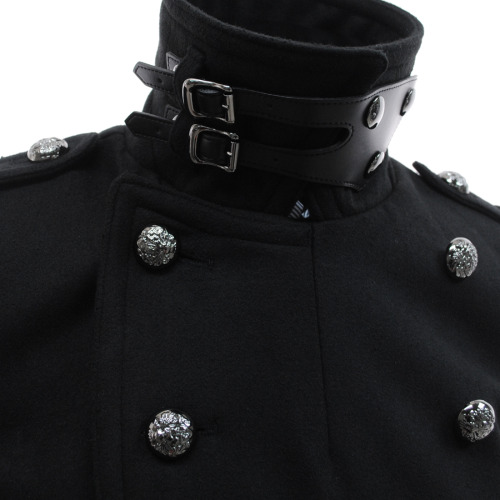
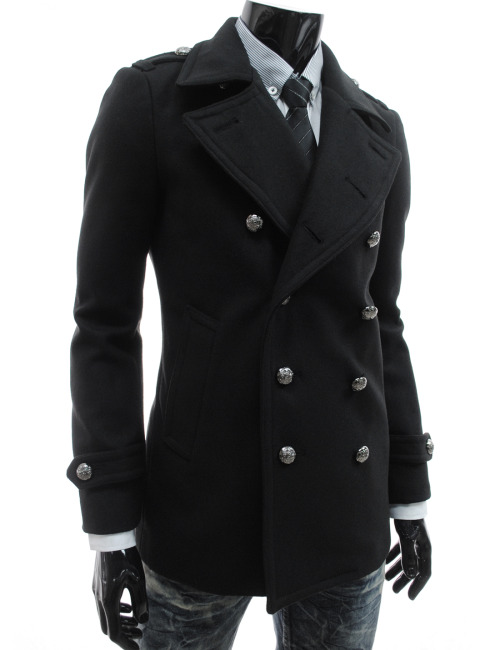
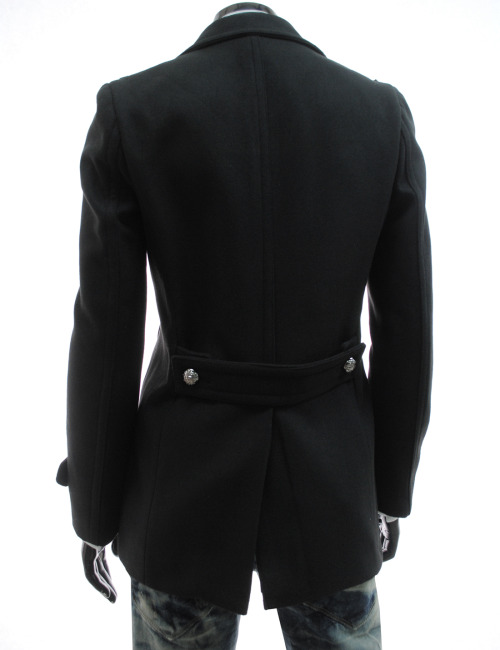
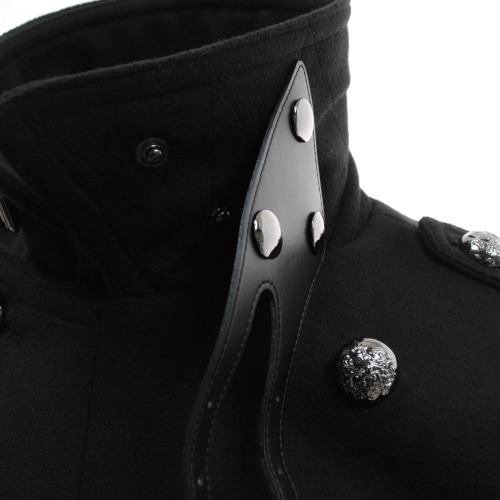
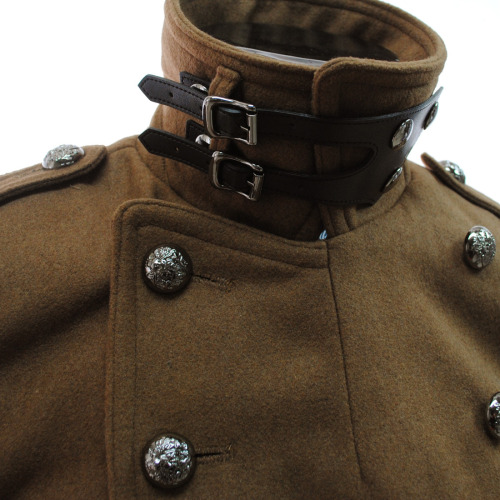
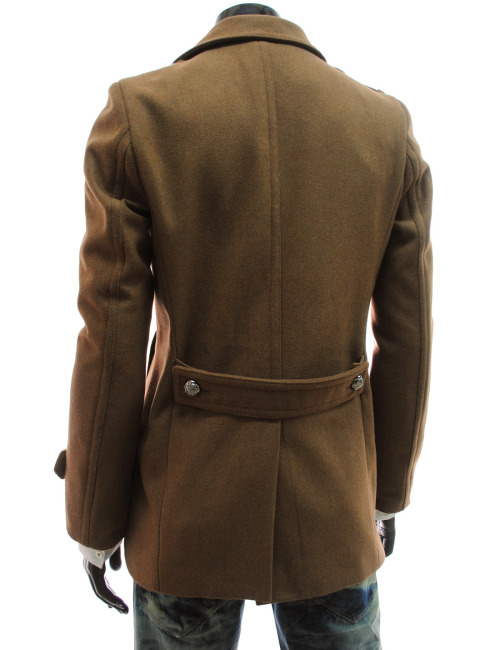
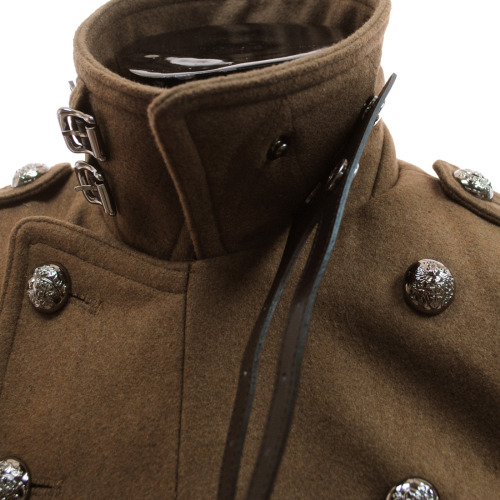
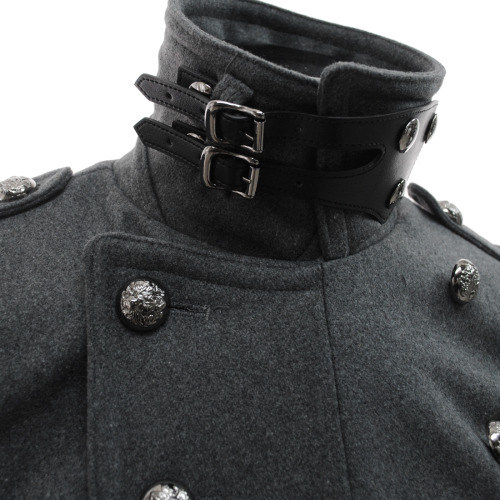
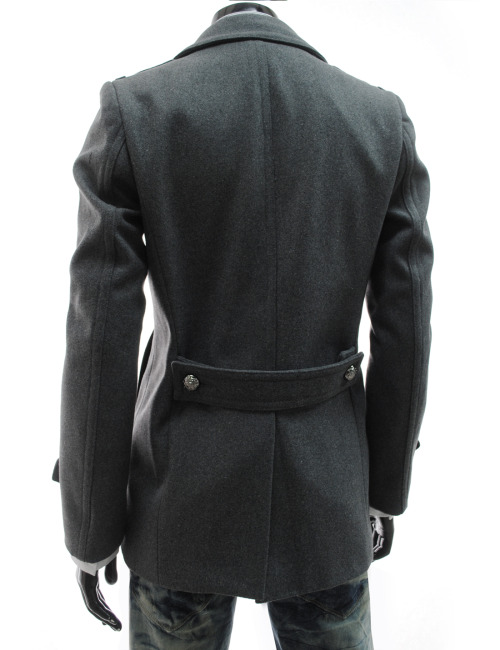
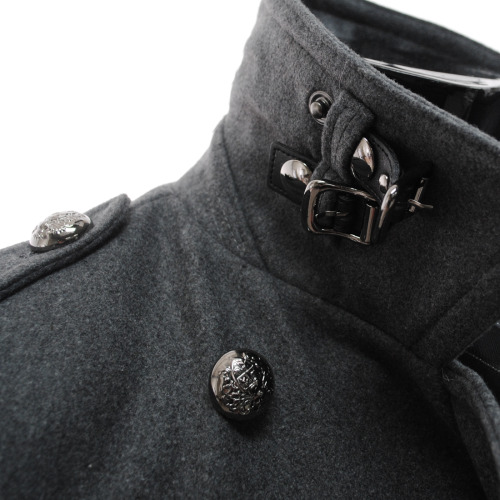
Slim Fit Double Breasted Leather Neck Belt 12 Button Wool Coat



People, especially games, get eldritch madness wrong a lot and it’s really such a shame.
An ant doesn’t start babbling when they see a circuit board. They find it strange, to them it is a landscape of strange angles and humming monoliths. They may be scared, but that is not madness.
Madness comes when the ant, for a moment, can see as a human does.
It understands those markings are words, symbols with meaning, like a pheromone but infinitely more complex. It can travel unimaginable distances, to lands unlike anything it has seen before. It knows of mirth, embarrassment, love, concepts unimaginable before this moment, and then…
It’s an ant again.
Echoes of things it cannot comprehend swirl around its mind. It cannot make use of this knowledge, but it still remembers. How is it supposed to return to its life? The more the ant saw the harder it is for it to forget. It needs to see it again, understand again. It will do anything to show others, to show itself, nothing else in this tiny world matters.
This is madness.
So you want to start a podcast: a collection of resources
So @borinquenaqueer requested resources for podcasters, and I started collecting mine and typing up info about them and then it turned into a Whole Thing, so I decided to just make it its own post in case other people also find it helpful. Below the cut, we're gonna cover:
Microphones (what types are out there + personal recommendations)
Recording your show
Editing your show
Audio hosting (what is it + how much does it cost + personal recommendations)
Website hosting (why I recommend having a website + cost + recs)
Music
Cover art
Transcripts
Press kits (what are they + why you might want to have one + how to make one)
Other resources (a collection of articles about podcasting that people might find helpful)
(Quick note: this is all geared towards a general audience, so any “you” in this post should be taken to mean a vague “you, any podcaster reading this” rather than a particular person!)
Microphones
There are two types of microphones commonly used in podcasting: XLR and USB.
XLR microphones connect to an audio interface with an XLR cable; the audio interface then connects to your computer with a USB cable.
USB microphones connect directly to your computer with a USB cable.
Here's a quick rundown of how they compare:
XLR Microphones
Cost: Cost varies depending on what you get, but all of the pieces together will probably come out to around $100 minimum
Audio Quality: Reliably crisp and clear even on the lower end of the budget
Background Noise: Generally good at picking up only your voice and filtering out background noise
Components: You'll need a microphone, mic stand, audio interface, XLR cable, and USB cable
Replacing/Upgrading: While the whole kit and kaboodle will probably come out to around $100, each individual piece can be found in the $20-40 range, which makes them easier to replace if one of them breaks. You can also upgrade your equipment one piece at a time (e.g. I started with a $20 mic and later upgraded to a $100 mic without changing any of my other equipment)
Set-Up: Can take slightly longer to set up, especially when you're just getting used to it. None of the set up is particularly hard (it's really just plugging things into other things and fiddling with knobs), but it can take a few minutes
Portability: Can be taken out of the house if you get a portable audio interface
USB Microphones
Cost: Starts around $25, with most falling in the $50-100 range. Most don’t come with a pop filter, which will cost an extra $5-15 depending on the type you get
Audio Quality: The $25-40 range will probably be a little grainy/poppy, but that’s not a huge deal if you don’t mind that it might cost you some listeners (there are some people who are just picky about what quality of audio they listen to and others who have hearing issues that means they genuinely need high-quality audio to understand anything). You’ll get more reliable audio quality once you hit the $50-100 range
Background Noise: Can pick up a lot of background noise, which can be an issue if you live somewhere with a lot of ambient sounds (like near a highway or in an apartment with a toddler above you)
Components: You just need the microphone and a USB cable, which are generally sold together
Replacing/Upgrading: There’s really just one main component to this set-up (the microphone), so if it breaks, you’ll have to replace your whole set-up. Same with upgrading—if you want to upgrade to a better mic at some point, you’ll probably be looking at replacing your set-up entirely (though this can also be an upside if you’re able to sell your old mic, since that can offset the cost of getting a new one)
Set-Up: Very quick—you just plug in, adjust the knobs, and go
Portability: You can generally only use it if you have a computer to plug it into, so it’s about as portable as your computer happens to be (and, of course, is reliant on your computer’s battery life)
Bonus: Pop Filters
No matter which kind of microphone you use, you’ll probably want a pop filter. There are two kinds: one looks like a piece of very thin fabric stretched over a plastic hoop that’s attached to a long, flexible neck; you attach the neck to either your microphone or the table you’re recording on, then move the screen so it’s between your mouth and the microphone. The other kind looks like a foam ball with a hole cut through one side; you just put it over your microphone. The first kind usually runs around $15, the second around $2-5. You can use either or both, but I highly recommend using at least one.
This is because of plosives. A plosive is a kind of sound you make by stopping your airflow, followed by a sudden release of air—like the p or b sounds in English. When you record yourself saying those sounds (and you’ll be saying them a lot), the microphone picks up the burst of air as a sudden spike in noise, which can be really unpleasant and jarring to listen to. When you use a pop filter, it dampens the burst of air and stops the audio from spiking. If you don’t have the money to buy one, you can find tutorials for making your own online!
Microphone Recommendations
XLR: I started out using a Behringer Ultravoice XM8500 microphone ($25) connected to a Behringer U-Phoria UM2 Audio Interface ($50). After buying cords, a pop filter, and a mic stand, the set-up came out to a bit over $100.
USB: The Blue Yeti is considered somewhat of a gold standard for USB mics in podcasting (I believe Welcome to Night Vale is/was recorded on a Yeti, though I could be wrong). It’s about $100-140 depending on where you buy. For a more budget-friendly option, I know people who have gotten great results from the Blue Snowball, which can be found online for around $45-50.
Tip: Buy Extra Cords
Whatever kind of microphone you buy, I highly recommend getting an extra of each kind of cord you need. Cords have this habit of breaking right before (or in the middle of) recording sessions and that is much easier to deal with if you have an extra on hand!
Resources
30 of the Best Podcast Microphones (For Any Budget)
21 of the Best USB Microphones for Podcasts (That Won’t Break the Bank)
Recording Your Show
To record your show, you’ll need some kind of program on your computer that can record sound. My go-to is Audacity: it’s totally free, has a pretty robust toolset, and is (at least in my opinion) pretty user-friendly. It’s also been around for ages and is super popular, so it’s really easy to find how-to guides online (both general “how do I use this program at all?” and more specific questions like “how do I reduce noise?”). You can also just play around with whatever recording program came pre-installed on your computer.
If you have multiple people on your show and you’re recording together online (e.g. over a Discord call), I extremely extremely recommend having everyone record their audio individually and then stitching them together rather than just recording the call. It’s more work, but it will sound worlds better.
Editing Your Show
So, I have done editing before. I’m not going to pretend I’m particularly skilled at it, and I would feel bad passing on advice that could be bad, so instead I’m gonna skip right to the Resources part of this section and pass you on to people who know more than me.
Resources
Why I Edit Actual Play Podcasts on an iPad
A Massively Oversimplified Guide to Loudness
Podcast Problems: The Love and Fear of Silence
Audacity Tutorial for Podcasters: How to Setup, Record, and Edit a Podcast
That last one is obviously geared specifically towards Audacity, but if you use a different program, just Googling “how to edit a podcast in [program]” can usually get you some great in-depth tutorials.
Audio Hosting
To submit your podcast to podcatchers like Apple/Google Play/Spotify, you need to have an RSS feed. To get an RSS feed, you need to use a hosting service, like Libsyn or Pinecast. Many of these (though not all of them!) cost money, but they can be pretty cheap—I started out using Libsyn, which starts at $5/mo per podcast. As a heads up, at least with the paid services I’m familiar with, you don’t just pay for the service while you’re actively uploading your podcast; you’ll have to keep paying for as long as you want your feed to remain active (meaning that people can still listen to your show).
I currently use Pinecast, which I highly recommend if you’re going to do multiple shows, because you can have multiple shows on the same $10/mo plan (vs services like Libsyn which charge per show).
Resources
The 9 Best Free Podcast Hosting Services in 2022
The 10 Best Podcast Hosting Services (for new & experienced podcasters)
Website Hosting
I extremely recommend having a website. This will provide a handy dandy place for people who interested in your show to find out things like when/where your show releases, who makes it and where they can be found, and how people can contact you. If you have a Patreon/ko-fi/other way for people to pay you, you can also link it here. Same with transcripts. This doesn’t have to be anything fancy or even cost you any money—I’ve seen great websites that are just based on Tumblr or Carrd, which you can make totally for free.
Here are some examples of podcasting websites on a variety of different platforms:
Re: Dracula (Tumblr, free—I believe they do have another website, but this is a great example of a Tumblr blog for a podcast)
Starlight Audio Productions (Squarespace, $17/mo—this one is mine!)
Sidequesting (Carrd, free—though I believe you have to pay extra for a custom domain, like this website has)
Hug House Productions (Wordpress, which has a range of costs starting around $4/mo; this particular website plan is $25/mo, which allows them to have a store on their site)
Zebulon Podcasts (Wix, free—though you can pay money to remove the banner at the top and get a custom domain)
You may also consider getting a custom domain name, which is how the Starlight Audio website is starlightaudio.com instead of starlightaudio.squarespace.com. You can hook a custom domain up to a lot of different website builders, including Tumblr blogs, though some of them (like Wix) will charge extra for it. Custom domain names do cost money, though usually not a ton—I pay $10/year for the Starlight Audio domain and Hug House pays $20/year for theirs (thank you to Anne at Hug House for answering my questions!).
Music
For music, you have a few options:
Find music online that’s free to use—just make sure that it’s free to use, not just free to download; and if you plan on running ads at any point, make sure that it’s free to use for commercial rather than personal use. My old queer history podcast (RIP) used a Jonathan Coulton song because he, bless him, releases his music for free non-commercial use with attribution
Find music you like from an independent artist and ask their permission to use it—not every artist will let you use their stuff for free, but many will, especially if you credit them in every episode
Commission an artist to make a custom song for you—this will have a huge range of costs depending on who you get and how much they charge; in my experience it’ll usually be in the $100-400 range. If you plan on having ads on your show, make sure that the artist knows that and is okay with it!
If you’re a composer, you can also make your own song and use it however the heck you want. You make the rules now.
Whatever you do, I do recommend having some kind of opening music, because it’s a great way to set the tone for your show and make it more distinctive (think about how the light, bouncy Parks & Recreation theme song sets up the show as a lighthearted comedy while the dark, eerie Hannibal theme song sets up the show as a bloody horror show). If you can’t afford to pay any money for your opening song, that’s totally fine—you can find tons of music online that’s free to use and will sound great!
Resources
Where to Get Music for Podcasts Free of Royalty Issues
Cover Art
We’ve got two main options here:
Do it yourself. I tend to make my covers in Photoshop, but Canva is a very popular and user-friendly option. Canva is free to use and has tons of free assets available, though you can also pay $10/mo to have an expanded asset catalog. There are also tons of free tutorials on Youtube for how to make good art in Canva!
Commission someone to make it for you. Cost for this will vary wildly depending on who you go with (anywhere from $50-400 or more), and will also vary according to whether you plan to sell merch with your show art on it (if you plan on making a profit from it, you’ll probably need to pay more to the artist you commission it from, though some will also be open to you paying less upfront if you give them a cut of merchandise profits)
Resources
The Sound Barrier: Does Cover Art Matter?
Canva podcast templates
Fiverr and Upwork (websites for hiring freelancers)
Transcripts
Transcripts can be used to make your podcast accessible to deaf and hard-of-hearing people, like me! I’m not going to spend tons of time in this post going into why you should have podcasts and how to edit/host/format them—I’ve already written a pretty extensive article that covers those things, which I’ll link under Resources below.
However, that article is geared mostly towards turning recording scripts for fiction podcasts into transcripts, which is a bit of a different process than getting transcripts for an unscripted show. If your show is unscripted and you want to provide transcripts, there are three main ways to do it:
Hire a transcriber. You can find transcribers on Fiverr and Upwork (linked above). Usual rates are around $0.30-2.00 per minute of audio
Transcribe it yourself. This is a huge amount of work and I don’t really recommend it if you’re not an experienced transcriber with a bunch of time on your hands. Instead, if you can’t afford someone to transcribe your show from scratch, try…
Generating an auto-transcript using a service like Otter.ai. This can be a great budget option if you can’t afford a transcriber. However, if you do this, please edit your transcripts. You know how Youtube autocaptions are infamously bad? Services like Otter have come a long way, but they’re still going to have those same issues. Most of them also only reference English dictionaries and will massively fuck up non-English words and names. Please edit your transcript to make sure it’s actually accurate
A lot of people will say that you absolutely have to have a transcript for your show—that if you don't, you're Evil and Personally Hate Accessibility. I actually disagree with that, because at the end of the day, having transcripts does take require either time or money, and I know a lot of podcasters just don’t have either of those. But if you’re able to have transcripts, it means your podcast is accessible to deaf and hard-of-hearing people (as well as people with audio processing issues), which is a really kind thing to do and helps make the world a more accessible place.
Resources
How to Make Your Podcast More Accessible Using Transcripts (written by me!)
I don’t currently know of any how-to guides for editing auto transcripts, but I’m asking around and will update if I find one
Press Kits
A press kit is essentially a handy little packet that people can view or download that includes a bunch of info about your show all in one easily-accessible place—think things like your cast/crew, what your show is about, how it started, when and how to listen to it, your cover art, that kind of thing. It’s called a “press kit” because it’s most commonly used by journalists (press) to make it easier for us to write about your show. This isn’t a requirement to have a podcast or anything, but it makes it easier for people to give your show free publicity, which is a very useful thing!
Here are some examples of podcast press kits:
Love and Luck (Squarespace)
Twilight Over Midgard (Squarespace, with a bit of a different format—this is my upcoming show)
Sidequesting (Carrd)
VALENCE (Wordpress)
Zebulon Podcasts (Wix; click on “Menu” then “Press Kit”)
I can’t explain how to make a press kit better than my friend Elena Fernández Collins already has, so I’ll just link that below—give it a look!
Resources
Press Play on a Podcast Press Kit
Other Resources
Finally, here are some general podcasting resources that didn’t fit into any of the above categories:
Discover Pods (disclaimer: I used to write for them)
How To Start A Podcast The Right Way (The Definitive Complete Guide for 2022)
Podcaster Resources
Simplecast blog (disclaimer: I currently write for them)
Less is More: Refining the Scope of your Audio Drama
How to Tumblr as a Fiction Podcaster
“As You Know, Bob…”: Creating Natural-Sounding Dialogue in Audio
Bello Collective
The blogs of Wil Williams and Elena Fernández Collins and the “Podcasting Resources” page of Tal Minear (disclaimer: I’m friends with these people, but I do genuinely think their writing is great and I’d be recommending it even if I didn’t love them as people)
I’ve also written several articles on podcasting; here’s links to a few of my favorites
I Have a Podcast—Now What the Heck Do I Call It?
Avoiding Podcasting Burnout When Your Love Your Work
Writing Mentally Ill Characters in Horror (Without the Ableism)
Thanks for reading this massive post! I hope at least a few people find it helpful. If you liked this post, reblogs are super appreciated. If you like how I write, you can find more in my writing portfolio and on the blog on my website, where I’m currently chronicling my journey trying to get a book published.
If anyone has questions, feel free to ask and I’ll respond as best as I can!
Essays
Here’s a (non-exhaustive) list of essays I like/find interesting/are food for thought; I’ve tried to sort them as much as possible. The starred (*) ones are those I especially love
also quick note: some of these links, especially the ones that are from books/anthologies redirect you to libgen or scihub, and if that doesn’t work for you, do message me; I’d be happy to send them across!
Literature + Writing
Godot Comes to Sarajevo - Susan Sontag
The Strangeness of Grief - V. S. Naipaul*
Memories of V. S. Naipaul - Paul Theroux*
A Rainy Day with Ruskin Bond - Mayank Austen Soofi
How Albert Camus Faced History - Adam Gopnik
Listen, Bro - Jo Livingstone
Rachel Cusk Gut-Renovates the Novel - Judith Thurman
Lost in Translation: What the First Line of “The Stranger” Should Be - Ryan Bloom
The Duke in His Domain - Truman Capote*
The Cult of Donna Tartt: Themes and Strategies in The Secret History - Ana Rita Catalão Guedes
Never Do That to a Book - Anne Fadiman*
Affecting Anger: Ideologies of Community Mobilisation in Early Hindi Novel - Rohan Chauhan*
Why I Write - George Orwell*
Rimbaud and Patti Smith: Style as Social Deviance - Carrie Jaurès Noland*
Art + Photography (+ Aesthetics)
Looking at War - Susan Sontag*
Love, sex, art, and death - Nan Goldin, David Wojnarowicz
Lyons, Szarkowski, and the Perception of Photography - Anne Wilkes Tucker
The Feminist Critique of Art History - Thalia Gouma-Peterson, Patricia Mathews
In Plato’s Cave - Susan Sontag*
On reproduction of art (Chapter 1, Ways of Seeing) - John Berger*
On nudity and women in art (Chapter 3, Ways of Seeing) - John Berger*
Kalighat Paintings - Sharmishtha Chaudhuri
Daydreams and Fragments: On How We Retrieve Images From the Past - Maël Renouard
Arthur Rimbaud: the Aesthetics of Intoxication - Enid Rhodes Peschel
Cities
Tragic Fable of Mumbai Mills - Gyan Prakash
Whose Bandra is it? - Dustin Silgardo*
Timur’s Registan: noblest public square in the world? - Srinath Perur
The first Starbucks coffee shop, Seattle - Colin Marshall*
Chhatrapati Shivaji Terminus, Mumbai’s iconic railway station - Srinath Perur
From London to Mumbai and Back Again: Gentrification and Public Policy in Comparative Perspective - Andrew Harris
The Limits of “White Town” in Colonial Calcutta - Swati Chattopadhyay
The Metropolis and Mental Life - Georg Simmel
Colonial Policy and the Culture of Immigration: Citing the Social History of Varanasi - Vinod Kumar, Shiv Narayan
A Caribbean Creole Capital: Kingston, Jamaica - Coln G. Clarke (from Colonial Cities by Robert Ross, Gerard J. Telkamp
The Colonial City and the Post-Colonial World - G. A. de Bruijne
The Nowhere City - Amos Elon*
The Vertical Flâneur: Narratorial Tradecraft in the Colonial Metropolis - Paul K. Saint-Amour
Philosophy
The trolley problem problem - James Wilson
A Brief History of Death - Nir Baram
Justice as Fairness: Political not Metaphysical - John Rawls*
Should Marxists be Interested in Exploitation? - John E. Roemer
The Discomfort You’re Feeling is Grief - Scott Berinato*
The Pandemic and the Crisis of Faith - Makarand Paranjape
If God Is Dead, Your Time is Everything - James Wood
Giving Up on God - Ronald Inglehart
The Limits of Consensual Decision - Douglas Rae*
The Science of “Muddling Through” - Charles Lindblom*
History
The Gruesome History of Eating Corpses as Medicine - Maria Dolan
The History of Loneliness - Jill Lepore*
From Tuskegee to Togo: the Problem of Freedom in the Empire of Cotton - Sven Beckert*
Time, Work-Discipline, and Industrial Capitalism - E. P. Thompson*
All By Myself - Martha Bailey*
The Geographical Pivot of History - H. J. Mackinder
The sea/ocean
Rim of Life - Manu Pillai
Exploring the Indian Ocean as a rich archive of history – above and below the water line - Isabel Hofmeyr, Charne Lavery
‘Piracy’, connectivity and seaborne power in the Middle Ages - Nikolas Jaspert (from The Sea in History)*
The Vikings and their age - Nils Blomkvist (from The Sea in History)*
Mercantile Networks, Port Cities, and “Pirate” States - Roxani Eleni Margariti
Phantom Peril in the Arctic - Robert David English, Morgan Grant Gardner*
Assorted ones on India
A departure from history: Kashmiri Pandits, 1990-2001 - Alexander Evans *
Writing Post-Orientalist Histories of the Third World - Gyan Prakash
Empire: How Colonial India Made Modern Britain - Aditya Mukherjee
Feminism and Nationalism in India, 1917-1947 - Aparna Basu
The Epic Riddle of Dating Ramayana, Mahabharata - Sunaina Kumar*
Caste and Politics: Identity Over System - Dipankar Gupta
Our worldview is Delhi based*
Sports (you’ll have to excuse the fact that it’s only cricket but what can i say, i’m indian)
‘Massa Day Done:’ Cricket as a Catalyst for West Indian Independence: 1950-1962 - John Newman*
Playing for power? rugby, Afrikaner nationalism and masculinity in South Africa, c.1900–70 - Albert Grundlingh
When Cricket Was a Symbol, Not Just a Sport - Baz Dreisinger
Cricket, caste, community, colonialism: the politics of a great game - Ramachandra Guha*
Cricket and Politics in Colonial India - Ramchandra Guha
MS Dhoni: A quiet radical who did it his way*
Music
Brega: Music and Conflict in Urban Brazil - Samuel M. Araújo
Color, Music and Conflict: A Study of Aggression in Trinidad with Reference to the Role of Traditional Music - J. D. Elder
The 1975 - ‘Notes On a Conditional Form’ review - Dan Stubbs*
Life Without Live - Rob Sheffield*
How Britney Spears Changed Pop - Rob Sheffield
Concert for Bangladesh
From “Help!” to “Helping out a Friend”: Imagining South Asia through the Beatles and the Concert for Bangladesh - Samantha Christiansen
Gender
Clothing Behaviour as Non-verbal Resistance - Diana Crane
The Normalisation of Queer Theory - David M. Halperin
Menstruation and the Holocaust - Jo-Ann Owusu*
Women’s Suffrage the Democratic Peace - Allan Dafoe
Pink and Blue: Coloring Inside the Lines of Gender - Catherine Zuckerman*
Women’s health concerns are dismissed more, studied less - Zoanne Clack
Food
How Food-Obsessed Millennials Shape the Future of Food - Rachel A. Becker (as a non-food obsessed somewhat-millennial, this was interesting)
Colonialism’s effect on how and what we eat - Coral Lee
Tracing Europe’s influence on India’s culinary heritage - Ruth Dsouza Prabhu
Chicken Kiev: the world’s most contested ready-meal*
From Russia with mayo: the story of a Soviet super-salad*
The Politics of Pancakes - Taylor Aucoin*
How Doughnuts Fuelled the American Dream*
Pav from the Nau
A Short History of the Vada Pav - Saira Menezes
Fantasy (mostly just harry potter and lord of the rings)
Purebloods and Mudbloods: Race, Species, and Power (from The Politics of Harry Potter)
Azkaban: Discipline, Punishment, and Human Rights (from The Politics of Harry Potter)*
Good and Evil in J. R. R. Tolkien’s Lengendarium - Jyrki Korpua
The Fairy Story: J. R. R. Tolkien and C. S. Lewis - Colin Duriez (from Tree of Tales)*
Tolkien’s Augustinian Understanding of Good and Evil: Why The Lord of the Rings Is Not Manichean - Ralph Wood (from Tree of Tales)*
Travel
The Hidden Cost of Wildlife Tourism
Chronicles of a Writer’s 1950s Road Trip Across France - Kathleen Phelan
On the Early Women Pioneers of Trail Hiking - Gwenyth Loose
On the Mythologies of the Himalaya Mountains - Ed Douglas*
More random assorted ones
The cosmos from the wheelchair (The Economist obituaries)*
In El Salvador - Joan Didion
Scientists are unravelling the mystery of pain - Yudhijit Banerjee
Notes on Nationalism - George Orwell
Politics and the English Language - George Orwell*
What Do the Humanities Do in a Crisis? - Agnes Callard*
The Politics of Joker - Kyle Smith
Sushant Singh Rajput: The outsider - Uday Bhatia*
Credibility and Mystery - John Berger
happy reading :)
The Jewish Monster Hunter's Toolkit
Have you ever seen The Fearless Vampire Killers, in which an unfortunate barmaid learns what happens when you use a cross against a stereotypically Jewish vampire? Of course you have. Or if you’ve haven’t, perhaps you’ve read ‘Salem’s Lot, where the cross fails to work when the human holding it loses their faith.
Don’t let this happen to you!
Whether it’s about your own religion or the undead’s, vampire-hunting heroines and heroes may wish to come prepared with holy tools besides those of Christianity. Fortunately for our purposes, my father is a Rabbi who has taught classes on folklore, golems, and demons (and who owns a large poster of a dybbuk which scared the living daylights out of me as a child.) And so I turned to him for advice as to what should be in the toolkit of Jewish monster hunters or hunters of Jewish monsters.
“There are written amulets,” he says, “sometimes involving God’s name in various spellings and permutations along with kabbalistic passages (I remember seeing one, to protect against Lilith, over the head of a baby boy in a stroller in Jerusalem).” As far as amulets go, I personally would recommend the hamsa, traditionally used to protect against witchcraft and the evil eye. It’s much more likely to help you than the star of david, which has no such symbolism.
If you can get your hands on them, my father also suggests looking into books as talismans, specifically the Sefer Raziel, which is said to protect against fire. You can also go the route of getting a secular coin or amulet blessed by a Rabbi, which may then take on holy powers.
Golems are the most famous “Jewish monster” but don’t entirely fit the bill as one; they are created to protect Jewish communities, though there are stories of them going insane or following orders far too literally and making a mess of things. The traditional way to deactivate one is to erase the first letter of the word on its forhead, changing the word from emet (truth) to met (death.) There is also a story of a Rabbi who destroyed one by speaking the words Hadar l'afreikh - return to your dust. Good luck pulling any of this off if you’re not incredibly holy and blessed by God, though.
“I’ve seen a hasidic story about a werewolf,” adds my father, “but as I recall that took some serious praying on the part of the rebbe to kill it.”
There is also some amount of folk belief attributed to the mezuzah, a holy fixture upon the doorframes of observant Jews (my family included.) In addition to its religious significance, Meir of Rothenburg wrote “If Jews knew how serviceable the mezuzah is, they would not lightly disregard it. They may be assured that no demon can have power over a house upon which the mezuzah is properly affixed.” This is one I would not advise non-Jews using, since it posesses genuine religious relevence and would be disrespectful to misuse, but if you’re Jewish and your home already has one, such things are good to keep in mind.
My point in all of this isn’t to reduce my religion to superstitions, but to demonstrate the wide range of tools heroines (and writers, for that matter!) have to represent the forces of light. If any of my readers know of monster-hunting tips from their own culture, please share- we can never be too educated!
22 Essential Literary Devices and How to Use Them In Your Writing
hello, happy Monday. Hope you’re all having a wonderful day!
I will skip the pre-info and dive right into it.
What Is a Literary Device?
is a tool used by writers to hint at larger themes, ideas, and meaning in a story or piece of writing
The List of Literary Devices:
Allegory. Allegory is a literary device used to express large, complex ideas in an approachable manner. Allegory allows writers to create some distance between themselves and the issues they are discussing, especially when those issues are strong critiques of political or societal realities.
Allusion. An allusion is a popular literary device used to develop characters, frame storylines, and help create associations to well-known works. Allusions can reference anything from Victorian fairy tales and popular culture to the Bible and the Bard. Take the popular expression “Bah humbug”—an allusion that references Charles Dickens’ novella A Christmas Carol. The phrase, which is often used to express dissatisfaction, is associated with the tale’s curmudgeonly character, Ebenezer Scrooge.
Anachronism. Imagine reading a story about a caveman who microwaves his dinner, or watching a film adaptation of a Jane Austen novel in which the characters text each other instead of writing letters. These circumstances are examples of anachronisms, or an error in chronology—the kind that makes audiences raise their eyebrows or do a double-take. Sometimes anachronisms are true blunders; other times, they’re used intentionally to add humor or to comment on a specific time period in history.
Cliffhanger. It’s a familiar feeling: You’re on minute 59 of an hour-long television episode, and the protagonist is about to face the villain—and then episode cuts to black. Known as a cliffhanger, this plot device marks the end of a section of a narrative with the express purpose of keeping audiences engaged in the story.
Dramatic Irony. Remember the first time you read or watched Romeo and Juliet? The tragic ending of this iconic story exemplifies dramatic irony: The audience knows that the lovers are each alive, but neither of the lovers knows that the other is still alive. Each drinks their poison without knowing what the audience knows. Dramatic irony is used to great effect in literature, film, and television.
Extended Metaphor. Extended metaphors build evocative images into a piece of writing and make prose more emotionally resonant. Examples of extended metaphor can be found across all forms of poetry and prose. Learning to use extended metaphors in your own work will help you engage your readers and improve your writing.
Foreshadowing. At its core, storytelling has one ambition: to capture and sustain your reader’s attention and keep them reading your story. Foreshadowing, or slyly indicating a future event, is one technique a writer can use to create and build suspense.
Humor. Humor brings people together and has the power to transform how we think about the world. Of course, not everyone is adept at being funny—particularly in their writing. Making people laugh takes some skill and finesse, and, because so much relies on instinct, is harder to teach than other techniques. However, all writers can benefit from learning more about how humor functions in writing.
Imagery. If you’ve practiced or studied creative writing, chances are you’ve encountered the expression “paint a picture with words.” In poetry and literature, this is known as imagery: the use of figurative language to evoke a sensory experience in the reader. When a poet uses descriptive language well, they play to the reader’s senses, providing them with sights, tastes, smells, sounds, internal and external feelings, and even deep emotion. The sensory details in imagery bring works to life.
Irony. Irony is an oft-misunderstood literary device that hinges on opposites: what things are on the surface, and what they end up actually being. Many learn about dramatic irony through works of theater like Shakespeare’s Romeo and Juliet or Sophocles’s Oedipus Rex. When deployed with skill, irony is a powerful tool that adds depth and substance to a piece of writing.
Metaphor, Simile, and Analogy. Metaphors, similes, and analogies are three techniques used in speech and writing to make comparisons. Each is used in a different way, and differentiating between the three can get a little tricky: For example, a simile is actually a subcategory of metaphor, which means all similes are metaphors, but not all metaphors are similes. Knowing the similarities and differences between metaphor, simile, and analogy can help you identify which is best to use in any scenario and help make your writing stronger.
Motif. A motif is a repeated element that has symbolic significance to a story. Sometimes a motif is a recurring image. Sometimes it’s a repeated word or phrase or topic. A motif can be a recurrent situation or action. It can be a sound or a smell or a temperature or a color. The defining aspect is that a motif repeats, and through this repetition, a motif helps to illuminate the central ideas, themes, and deeper meaning of the story in which it appears.
Motif vs. Symbol. Both motifs and symbols are used across artistic mediums: Painters, sculptors, playwrights, and musicians all use motifs and symbols in their respective art forms. And while they are similar literary terms, “motif” and “symbol” are not synonyms.
Oxymoron. An oxymoron is a figure of speech: a creative approach to language that plays with meaning and the use of words in a non-literal sense. This literary device combines words with contradictory definitions to coin a new word or phrase (think of the idiom “act naturally”—how can you be your natural self if you’re acting?). The incongruity of the resulting statement allows writers to play with language and meaning.
Paradox. “This sentence is a lie.” This self-referential statement is an example of a paradox—a contradiction that questions logic. In literature, paradoxes can elicit humor, illustrate themes, and provoke readers to think critically.
Personification. In writing, figurative language—using words to convey a different meaning outside the literal one—helps writers express themselves in more creative ways. One popular type of figurative language is personification: assigning human attributes to a non-human entity or inanimate object in an effort to express a point or idea in a more colorful, imaginative way.
Satire. Satire is so prevalent in pop culture that most of us are already very familiar with it, even if we don’t always realize it. Satire is an often-humorous way of poking fun at the powers that be. Sometimes, it is created with the goal to drive social change. Satire can be part of any work of culture, art, or entertainment—it has a long history, and it is as relevant today as it was in ancient Rome.
Situational Irony. Irony: it’s clear as mud. Theorists quibble about the margins of what constitutes irony, but situational irony is all around us—from humorous news headlines to the shock twists in a book or TV show. This type of irony is all about the gap between our expectations and reality, and it can make a memorable and powerful impression when we encounter it.
Suspense. No matter what type of story you’re telling, suspense is a valuable tool for keeping a reader’s attention and interest. Building suspense involves withholding information and raising key questions that pique readers’ curiosity. Character development plays a big role in generating suspense; for example, if a character’s desire is not fulfilled by the end of the book, the story will not feel complete for the reader.
Symbolism. An object, concept, or word does not have to be limited to a single meaning. When you see red roses growing in a garden, what comes to mind? Perhaps you think literally about the rose—about its petals, stem, and thorns, or even about its stamen and pistil as a botanist might. But perhaps your mind goes elsewhere and starts thinking about topics like romance, courtship, and Valentine’s Day. Why would you do this? The reason, of course, is that over the course of many generations, a rose’s symbolic meaning has evolved to include amorous concepts.
Verisimilitude. Verisimilitude (pronounced ve-ri-si-mi-li-tude) is a theoretical concept that determines the semblance of truth in an assertion or hypothesis. It is also an essential tenet of fiction writing. Verisimilitude helps to encourage a reader’s willing suspension of disbelief. When using verisimilitude in writing, the goal is to be credible and convincing.
Vignette. A writer’s job is to engage readers through words. Vignettes—poetic slices-of-life—are a literary device that brings us deeper into a story. Vignettes step away from the action momentarily to zoom in for a closer examination of a particular character, concept, or place. Writers use vignettes to shed light on something that wouldn’t be visible in the story’s main plot.
I’ll make a post going into each of them individually in more detail later on!
Like, reblog and comment if you find this useful! If you share on Instagram tag me perpetualstories
Follow me on tumblr and Instagram for more writing and grammar tips and more!
-
 alicedyers reblogged this · 1 month ago
alicedyers reblogged this · 1 month ago -
 cube-farmer reblogged this · 3 months ago
cube-farmer reblogged this · 3 months ago -
 dilbobloggins liked this · 5 months ago
dilbobloggins liked this · 5 months ago -
 adruze reblogged this · 5 months ago
adruze reblogged this · 5 months ago -
 fan-art-maker liked this · 5 months ago
fan-art-maker liked this · 5 months ago -
 my---writing---blog reblogged this · 5 months ago
my---writing---blog reblogged this · 5 months ago -
 sixbluespiders liked this · 6 months ago
sixbluespiders liked this · 6 months ago -
 sapphires-and-silver-linings reblogged this · 6 months ago
sapphires-and-silver-linings reblogged this · 6 months ago -
 xxgalaxygabxx reblogged this · 6 months ago
xxgalaxygabxx reblogged this · 6 months ago -
 steampunk483 reblogged this · 6 months ago
steampunk483 reblogged this · 6 months ago -
 sylvesta-the-silliest-guy-ever liked this · 9 months ago
sylvesta-the-silliest-guy-ever liked this · 9 months ago -
 knightofbees liked this · 9 months ago
knightofbees liked this · 9 months ago -
 thegentlemanstar liked this · 9 months ago
thegentlemanstar liked this · 9 months ago -
 invisalame reblogged this · 9 months ago
invisalame reblogged this · 9 months ago -
 free-my-boy-grumbot liked this · 9 months ago
free-my-boy-grumbot liked this · 9 months ago -
 catqueen0124 liked this · 9 months ago
catqueen0124 liked this · 9 months ago -
 oran-rief reblogged this · 9 months ago
oran-rief reblogged this · 9 months ago -
 oran-rief liked this · 9 months ago
oran-rief liked this · 9 months ago -
 hinahimetan liked this · 9 months ago
hinahimetan liked this · 9 months ago -
 skitter-skatter69 reblogged this · 9 months ago
skitter-skatter69 reblogged this · 9 months ago -
 skitter-skatter69 liked this · 9 months ago
skitter-skatter69 liked this · 9 months ago -
 7thedisasterdyke reblogged this · 9 months ago
7thedisasterdyke reblogged this · 9 months ago -
 7thedisasterdyke liked this · 9 months ago
7thedisasterdyke liked this · 9 months ago -
 she-bags-sea-hags reblogged this · 9 months ago
she-bags-sea-hags reblogged this · 9 months ago -
 she-bags-sea-hags liked this · 9 months ago
she-bags-sea-hags liked this · 9 months ago -
 oysters-aint-for-me liked this · 9 months ago
oysters-aint-for-me liked this · 9 months ago -
 iamtrappedinsideasnowglobe reblogged this · 9 months ago
iamtrappedinsideasnowglobe reblogged this · 9 months ago -
 frostknightmare liked this · 10 months ago
frostknightmare liked this · 10 months ago -
 boredsquirrel liked this · 10 months ago
boredsquirrel liked this · 10 months ago -
 rosemints liked this · 10 months ago
rosemints liked this · 10 months ago -
 ineedcroissants liked this · 10 months ago
ineedcroissants liked this · 10 months ago -
 givemeallthesaintquartz liked this · 10 months ago
givemeallthesaintquartz liked this · 10 months ago -
 givemeallthesaintquartz reblogged this · 10 months ago
givemeallthesaintquartz reblogged this · 10 months ago -
 wee-miss-noone reblogged this · 10 months ago
wee-miss-noone reblogged this · 10 months ago -
 wee-miss-noone liked this · 10 months ago
wee-miss-noone liked this · 10 months ago -
 monica-tailor reblogged this · 10 months ago
monica-tailor reblogged this · 10 months ago -
 cktsotd reblogged this · 10 months ago
cktsotd reblogged this · 10 months ago -
 boiledegghole liked this · 1 year ago
boiledegghole liked this · 1 year ago -
 beez-n-crackers reblogged this · 1 year ago
beez-n-crackers reblogged this · 1 year ago -
 plotbunnypettingzoo reblogged this · 1 year ago
plotbunnypettingzoo reblogged this · 1 year ago -
 plotbunnypettingzoo liked this · 1 year ago
plotbunnypettingzoo liked this · 1 year ago -
 zanite8 reblogged this · 1 year ago
zanite8 reblogged this · 1 year ago -
 yourmoirail liked this · 1 year ago
yourmoirail liked this · 1 year ago -
 fool-of-a-rook reblogged this · 1 year ago
fool-of-a-rook reblogged this · 1 year ago -
 fool-of-a-rook liked this · 1 year ago
fool-of-a-rook liked this · 1 year ago -
 zanite8 liked this · 1 year ago
zanite8 liked this · 1 year ago -
 readysetyeet reblogged this · 1 year ago
readysetyeet reblogged this · 1 year ago -
 mistresssasori reblogged this · 1 year ago
mistresssasori reblogged this · 1 year ago -
 foxaelys liked this · 1 year ago
foxaelys liked this · 1 year ago



































